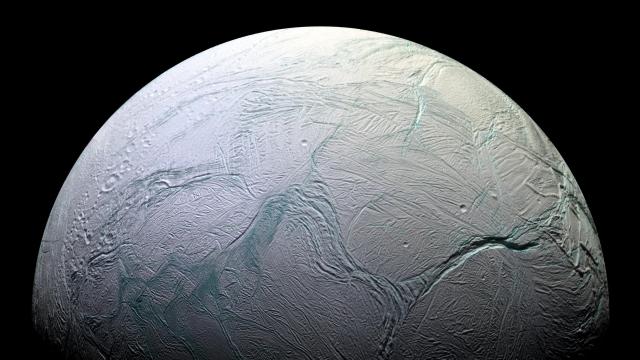Liquid water is typically associated with planet Earth, but our solar system hosts surprisingly large volumes of the stuff — you just need to know where to look.
Earth is parked inside our solar system’s habitable zone, a celestial sweet spot in which liquid water can persist on a world’s surface. Places outside this zone, whether planet, dwarf planet, or moon, are either burnt to a crisp or frozen solid, but that doesn’t mean they’re devoid of liquid water. Granted, this wet stuff isn’t just sitting on the surface in plain view, so scientists have had to use various tricks to find it.
Jupiter’s Moon Europa
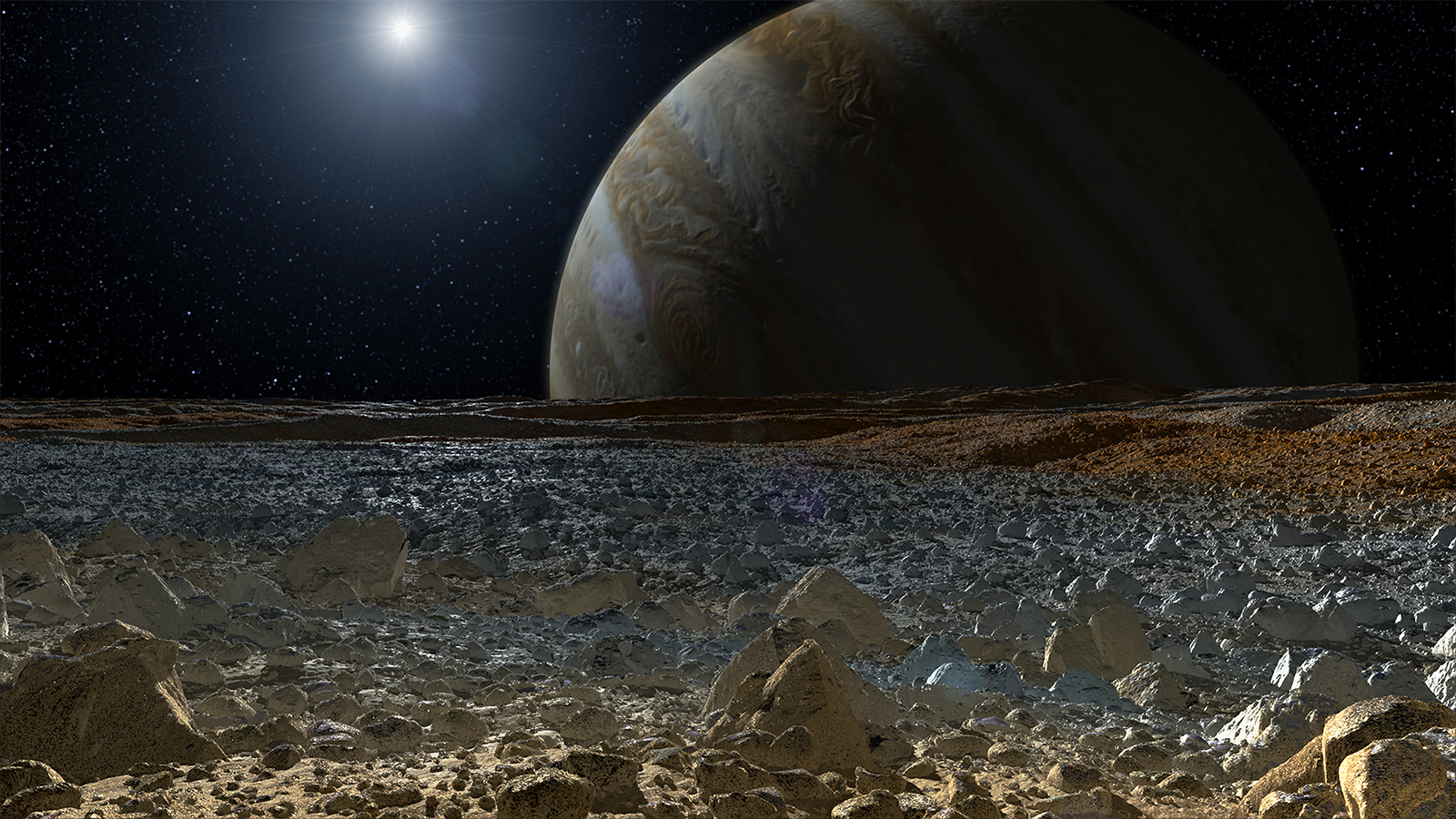
A warm watery world exists beneath the icy surface of Jupiter’s moon Europa. Gravitational tugs exerted by Jupiter, and not heat from the Sun, allow this water to remain in a liquid state.
Evidence of a subsurface ocean appeared in 2011, when the Hubble Space Telescope spotted geysers spewing out from the moon’s surface. The tallest of these geysers reached heights of 200 km. Funnily enough, NASA’s Galileo orbiter flew right through one of these watery jets back in 1997, though we didn’t learn about that until recently.
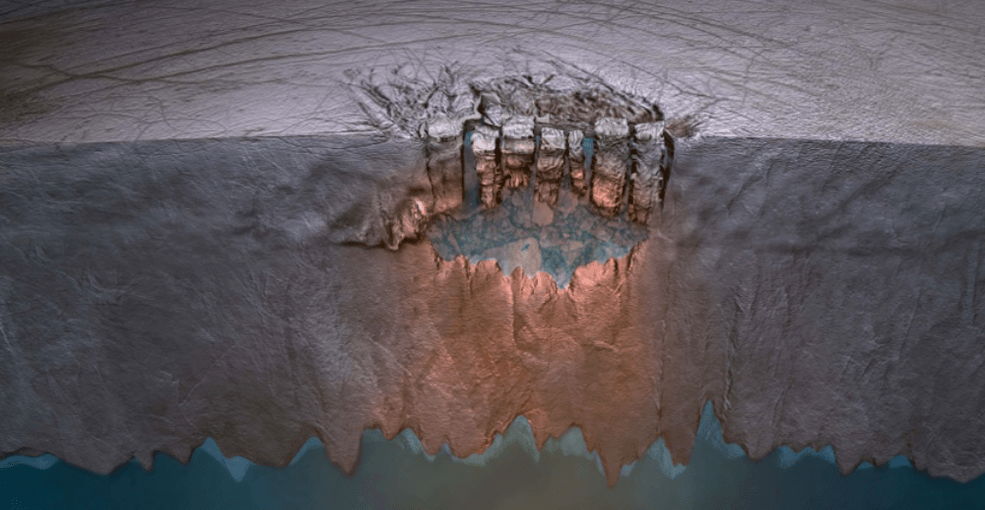
Europa features a scarred surface known as chaos terrains, which are caused by turbulent subsurface waters near the Europa’s lower latitudes. The tiny moon also experiences occasional tectonic shifts, which could be delivering materials to the ocean below. Not surprisingly, Europa is considered one of the best candidates in the solar system to host primitive life.
Jupiter’s Moon Ganymede

Not to be outdone by its Jovian sibling, Ganymede, the largest of Jupiter’s moons, also appears to host a hidden ocean world. Back in 2015, NASA scientists documented strange rocking motions in the moon, which they took as evidence of a substantial subterranean ocean. Calculations point to an ocean 100 km deep, pointing to a tremendous amount of liquid water on this oversized moon. For reference, oceans on Earth get no deeper than 10 km.
Saturn’s Moon Enceladus

Another subterranean ocean exists on Saturn’s moon Enceladus. Like Europa, this snowball-like moon occasionally spurts plumes of water into space. NASA’s Cassini orbiter detected traces of salt and silica dust coming from these geysers, pointing to complex chemical processes beneath the moon’s icy shell. Enceladus also features fractures on its surface called tiger stripes, which often leak water.
Liquid water has existed on Enceladus for potentially billions of years, and it’s concentrated in the moon’s southern hemisphere. The moon’s sandwiched liquid layer is roughly 8 to 10 km deep, and it contains about as much water as Lake Superior, the largest of the Great Lakes.

The moon’s highly elliptical orbit around Saturn and the ensuing tidal forces keep its rocky core toasty warm. Enceladus’s hot and highly porous core is made from silicates, which are conducive to complex chemical reactions — the kind that could support life. And indeed, organic molecules have already been detected on this fascinating moon, which should be studied further for evidence of microbial life.
Dwarf Planet Ceres
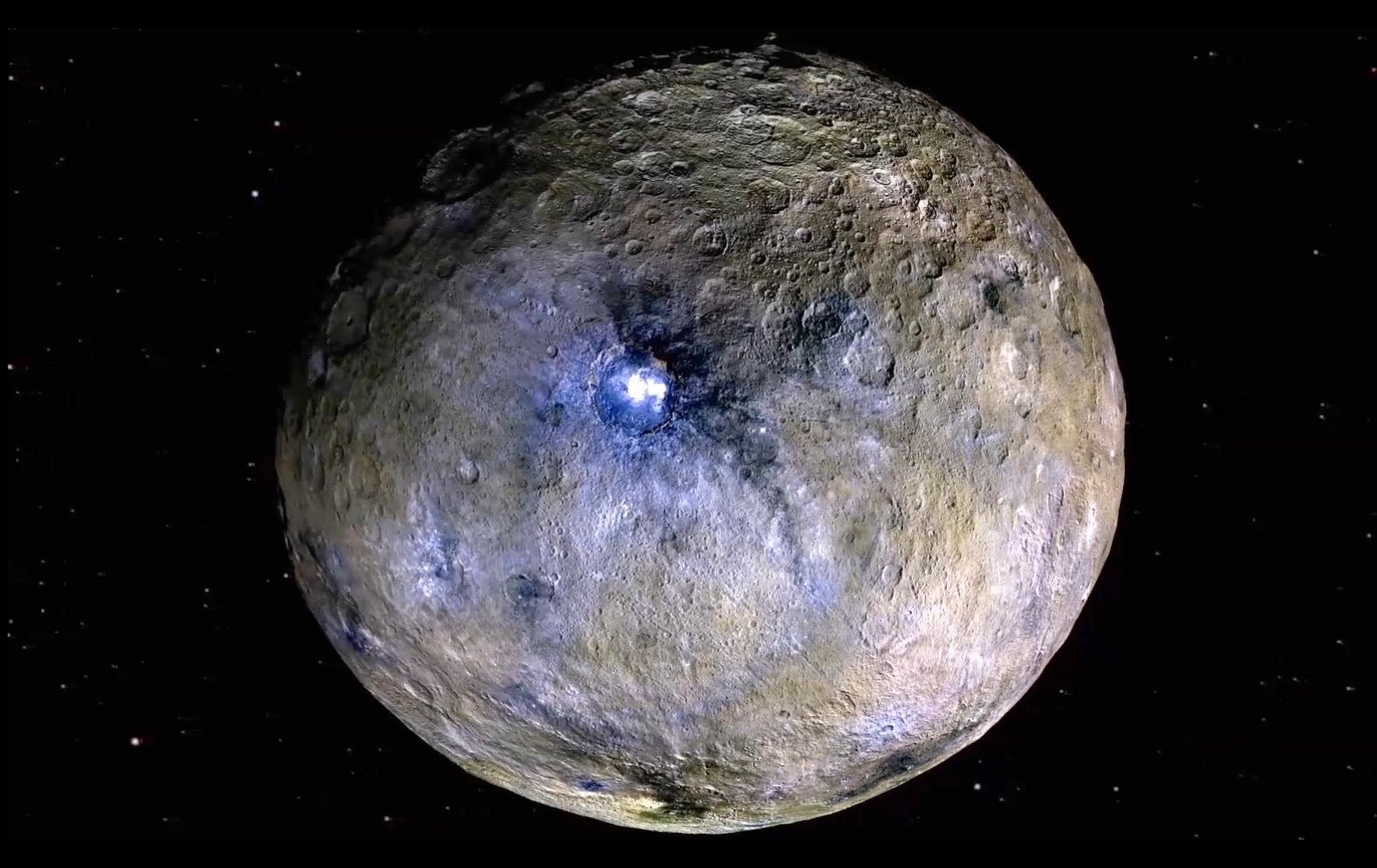
Dwarf planets in the asteroid belt aren’t typically associated with liquid water, but such is the case for Ceres, which was recently revealed to be a watery world. Unlike the icy moons around Jupiter and Saturn, however, Ceres has no gas giant to keep its liquid interior warm. Its subsurface ocean likely formed after an asteroid struck some 20 million years ago, forming Occator Crater, which exhibits several prominent bright spots.
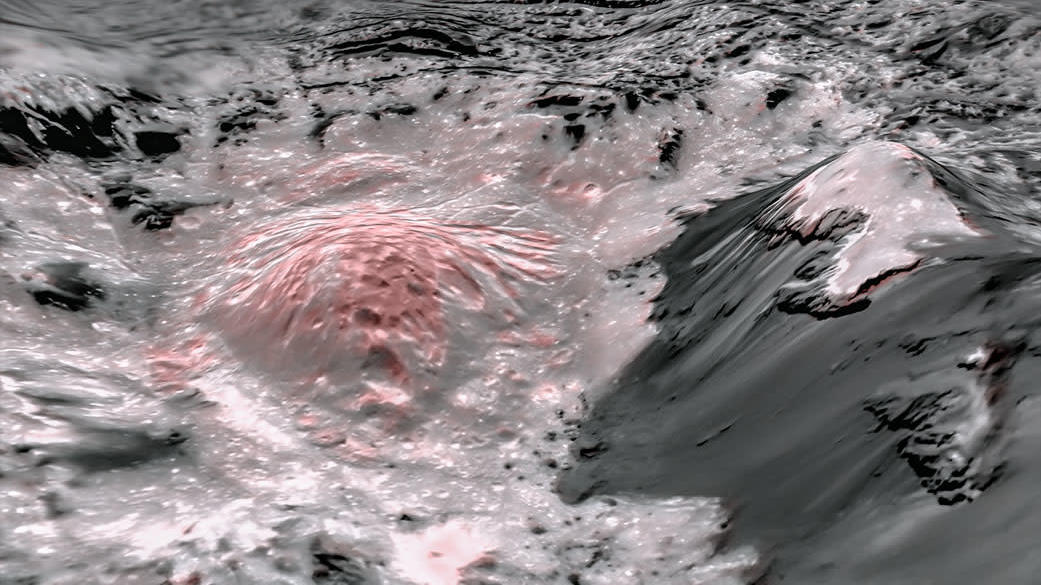
The heat generated from this impact is long gone, but the water on Ceres has remained in a slushy state owing to its high salt content. On occasion, this water is forced to the surface, leaving highly reflective deposits behind. The dwarf planet’s reservoir sits some 40 km beneath the surface, and it measures hundreds of miles wide — which is substantial, given that Ceres is just 950 km wide.
Mars
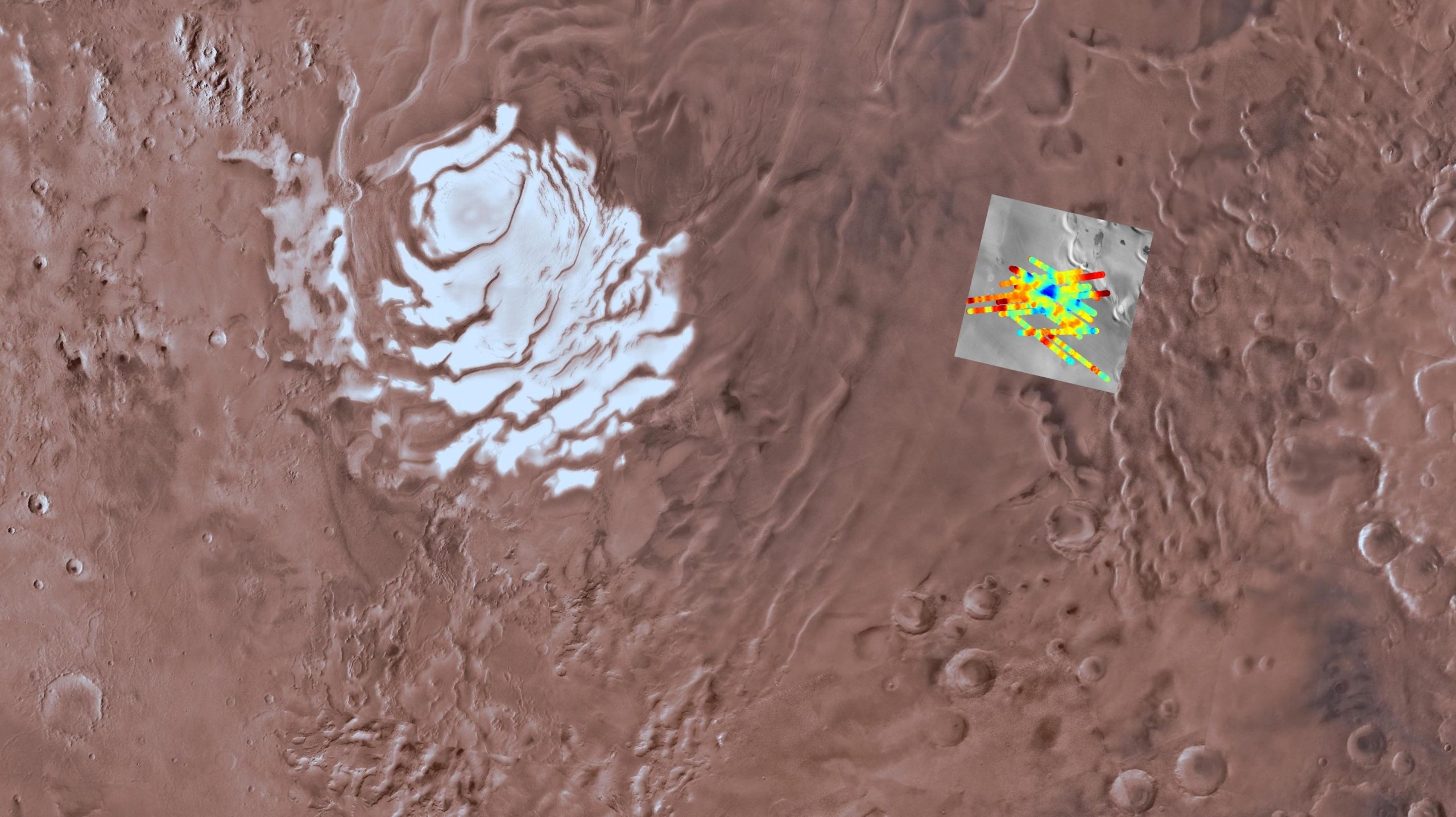
Mars used to host vast oceans and rushing rivers on its surface, but most of that water is now gone, lost to outer space. Some water still exists on Mars today, but it’s practically all ice. As research from 2018 showed, however, some stable liquid water may exist near the Red Planet’s south polar ice cap.
An instrument aboard the Mars Express spacecraft bounced radar off the Martian surface, showing an odd subterranean structure measuring 20 km across. Its physical properties led Italian scientists to propose the presence of liquid water, which likely exists as a brine pool or sludge filled with soil. This is potentially good news for future Martian explorers, as liquid water will be a scarce commodity on the Red Planet.
Pluto
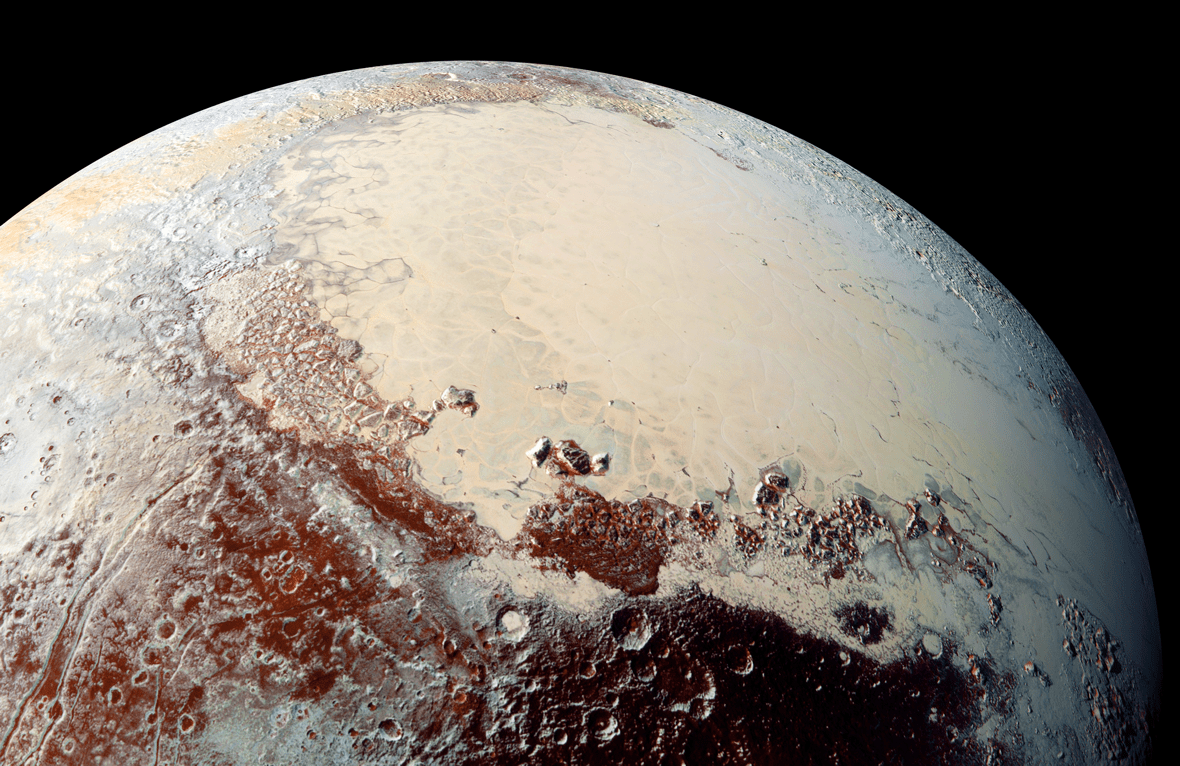
Dwarf planet Pluto may also harbour a subsurface ocean, according to research published earlier this year. Data beamed back by NASA’s New Horizons spacecraft showed an unusually dynamic surface, which scientists have been studying since the probe’s historic 2015 flyby.
Pluto appears to have gotten off to a hot start when it formed, allowing it to support an early subsurface ocean. Over time, as this liquid gradually froze and expanded, Pluto’s crust began to swell and crack. Some liquid water could still exist beneath Pluto’s frozen surface to this very day, in a process similar to the one seen on Ceres.
The ‘Ice Giants,’ Uranus and Neptune
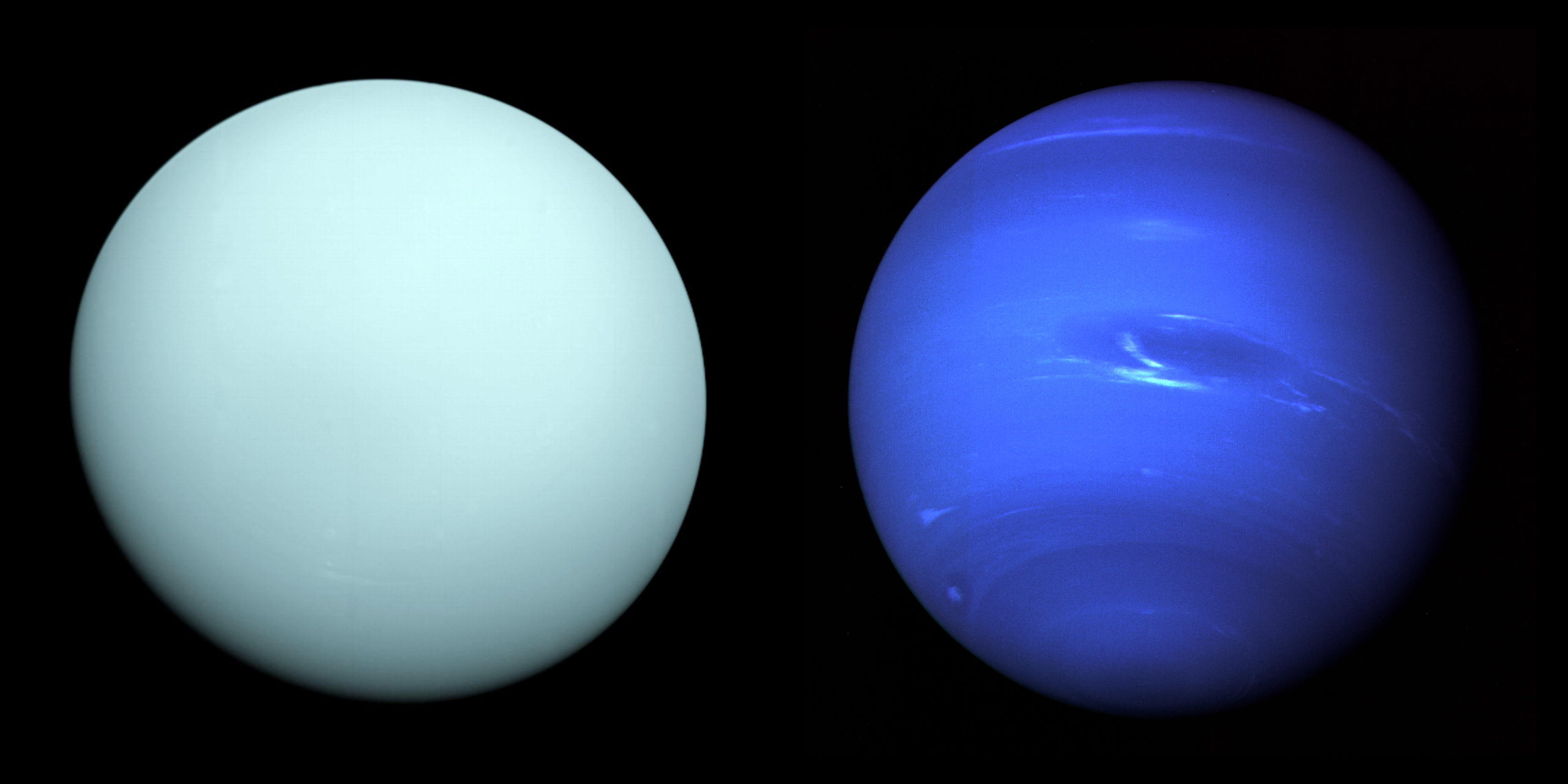
Hard to believe, but liquid oceans could also exist in the atmospheres of our two ice giants, Neptune and Uranus. This hasn’t been proven, but research from 2007 suggests it’s possible. Liquid water could exist deep inside these planets where the temperature and atmospheric pressure is just right. If oceans are real on Neptune and Uranus, they could account for as much as two-thirds of their total mass, according to NASA.
Lake Vostok
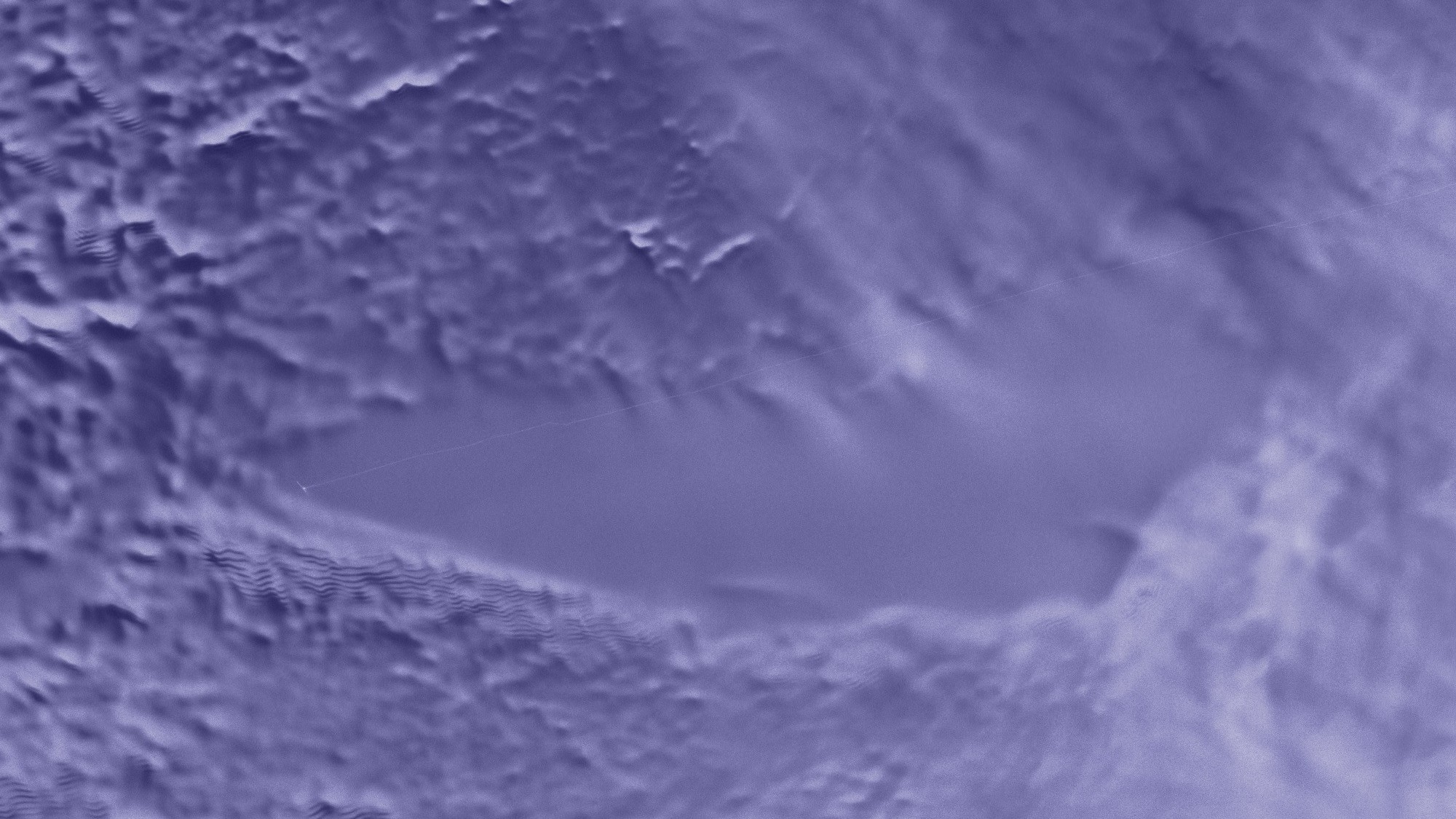
OK, we’re cheating a bit here, but Lake Vostok in Antarctica certainly qualifies as the most unearthly body of water on Earth.
The largest of Antarctica’s subterranean lakes, Vostok sits some 3,770 metres beneath the East Antarctic Ice Sheet. It measures 260 km and 48 km wide, and has a maximum depth around 500 metres. Incredibly, the lake sits beneath 4 km of ice.
Lake Vostok formed around 14 million years ago, and its water has been isolated from the rest of the world for around 1 million years. Vostok thus offers a unique environment for scientists studying ancient ecosystems, as this body of water could contain species never seen before (cue ominous horror movie music). What’s more, Lake Vostok could be a good analogue for Europa and Enceladus, which also feature bodies of water beneath an icy crust.
